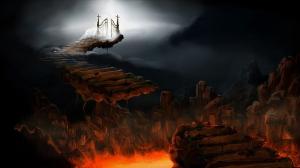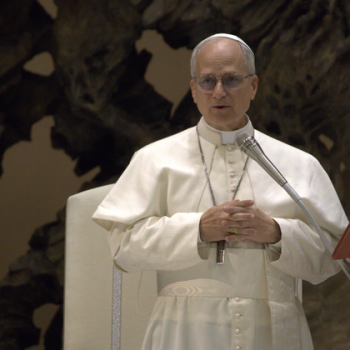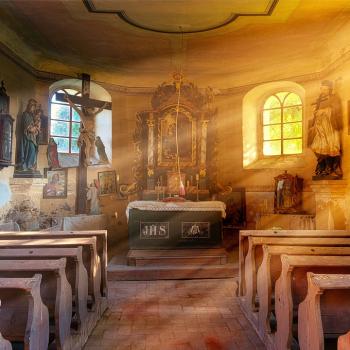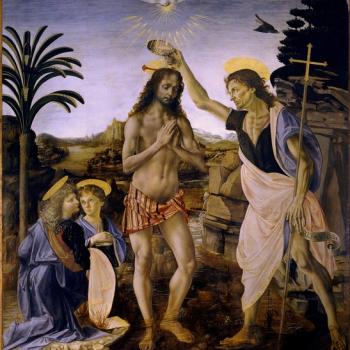
The Apostles Creed contains a remarkable claim that would astonish us if familiarity had not dulled our senses. In the fourth paragraph of the Creed, we are told that Jesus descended into Hell.
In this paper, I will review the basis for this assertion and what, within the context of the Apostles Creed, is meant by Hell. Lastly, I will examine the purpose of Jesus’ descent into Hell.
What Is The Basis For The Claim?
The Apostles’ Creed was primarily composed to combat heresies and to defend the Catholic faith. As such, it is apologetic in nature.
As to the Creed’s claim that Jesus descended to Hell, it appears predicated upon the words of the Apostle Peter. In 1 Peter 3:18-19, we read, “For Christ also suffered for sins once, the righteous for the sake of the unrighteous, that he might lead you to God. Put to death in the flesh; he was brought to life in the spirit. In it, he also went to preach to the spirits in prison.”
It follows from Scripture, then, that the Catholic Church asserts that Jesus experienced death. For this reason, the Catechism of the Catholic Church situates Jesus’ descent into Hell in a larger context: “The frequent New Testament affirmations that Jesus was ‘raised from the dead’ presuppose that the crucified one sojourned in the realm of the dead prior to his Resurrection. This was the first meaning given in the apostolic preaching to Christ’s descent into Hell: that Jesus, like all men, experienced death and, in his soul, joined the others in the realm of the dead. But he descended there as Savior, proclaiming the Good News to the spirits imprisoned there” (Catechism of the Catholic Church, Paragraph 632).
In conclusion, we can see that Jesus, in His human nature, experienced death, and in His human and divine nature, descended into the abode of the dead, into a place called Sheol.
A Place Called Sheol
The Hebrew word Sheol connotes the place where those that had died were believed to reside. Unlike the Christian conception of Hell, however, Sheol was initially considered to be the abode of all the dead, whether righteous or otherwise. However, this view would evolve, and by the time of Jesus, Judaism generally believed that Sheol was the place for the righteous dead only. Because of this, it became known as Abraham’s bosom, most likely because Abraham was considered the father of the Jewish people. To die, then, was to return to one’s ancestors.
The development of the doctrine that Sheol was a place for only the righteous dead placed it in agreement with the Christian view of God’s judgment of individual souls at the time of death. Significantly, this also placed Sheol in contrast with Hades. The Greek word Hades is in line with the English translation of Hell.
It would be an error, however, to consider Sheol as Heaven. Within the Jewish tradition, Sheol is described as a place of darkness where souls wait in silence. This concept of waiting can be inferred from the Jewish liturgy pertaining to Sheol. In the prayer called Shemoneh Esreh, those in Sheol are referred to as “sleepers in the dust.”
Contrast Sheol with the Catholic understanding of Heaven as the place and condition of perfect supernatural happiness predicated upon the beatific vision, primarily and the knowledge, love, and enjoyment of creatures secondarily. From the Catholic perspective, Sheol was the place the righteous dead went while awaiting the coming of Christ.
This excursion into Jewish theology provides a framework for understanding the Apostles Creed’s statement that Jesus descended into Hell. If we understand Hell within the context of Sheol, we have some comprehension of Jesus’ descent. Still, we must ask, why was it necessary that Jesus descend into Hell? To that question, I turn next.
Why Did Jesus Enter Into Hell?
To properly answer why Jesus entered Hell, it is beneficial to place the question within the larger framework of soteriology. Soteriology is that aspect of theology that concerns itself with how God – in the person of Jesus – effected human salvation. Put succinctly; soteriology is the doctrine of salvation. From the Catholic perspective, salvation is predicated upon faith in Jesus and His work on the Cross.
In order to understand why Jesus entered Hell, we must address the question of the status of those souls that died prior to the Incarnation. If salvation is predicated on faith in God, it would seem an injustice that the faithful who died prior to Jesus would be condemned. As Clement of Alexandria wrote, “It is not right that these should be condemned without trial, and those alone who lived after the advent should have the advantage of the divine righteousness.”
It is for this reason that the Catholic Church teaches that those who died in friendship with God before the Resurrection went to Sheol. In a sense, Sheol can be understood as a “waiting room” for those awaiting the Savior. In this light, it becomes intelligible why Jesus descended there to share the Good News.
Jesus’ descent into Hell should also be understood within the context of the Ascension. By descending into Hell, Jesus freed the righteous dead and brought them with Him to Heaven.
Conclusion
“Just as Jonah was in the belly of the whale three days and three nights, so will the Son of Man be in the heart of the earth three days and three nights.” – Matthew 12:40.
It seems logical that if the purpose of God becoming a human being was to provide a pathway for the salvation of all souls, then salvation must have been made available to those righteous souls who resided in Sheol. For that reason, for love, so did Jesus descend into Hell.















